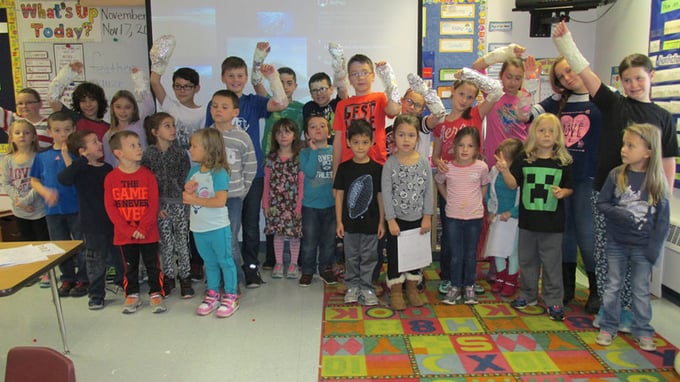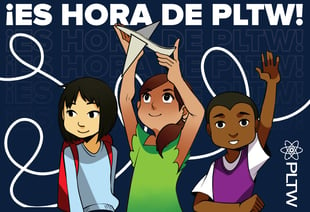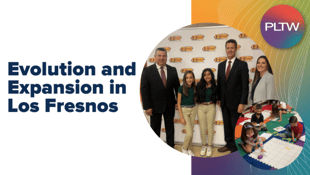Gina Jandreau is a fifth and sixth grade teacher at Madawaska Elementary in Madawaska, Maine. Gina has 28 years of teaching experience and loves biking, skiing, and reading.
We just started the PLTW program in our school this school year. Our local paper company, Twin Rivers, gave our school a grant to help us get started. We ordered our PLTW Launch kits over the summer and had them to start the year; however, our school did not have iPads for the older students, so Twin Rivers and Atlas Holdings sent us a supplemental grant to help us run the program as it was intended.
Teachers and students are incredibly excited about the program. We currently have three grades – kindergarten, third grade, and fifth grade – participating this year.
I teach fifth grade. We started with the Infection: Detection unit in which students design an experiment to find out how effective hand-washing methods might be. Their ideas were great! Some groups wanted to check if washing your hands for a longer period of time made a difference in hand cleanliness, while others wanted to check if wiping one’s hands with a paper towel instead of drying with a blower made a difference. Other groups had other unique thoughts on what they wanted to check, as well. It got them excited to plan what they were going to do, decide what materials they needed to make it happen, and work within the constraints given. This activity definitely helped with team building.
When our kindergartners were working on Structure and Function: Human Body, their teacher, Mrs. Sirois, asked if the fifth and sixth graders would be the patients for her kindergarten “doctors.” Of course we said yes! They had to make their casts light, waterproof, and strong. They had a model drawn out when we arrived. Then, they paired up with a fifth or sixth grader, showed them their plan, and got to work on building their casts. After evaluating their casts with help from the older students, they made changes if needed. It was wonderful to see the excitement on the kindergartners’ faces when the older students praised them on their work. When they were all done, the kindergarten students took turns presenting their patient and the qualities of their casts.
Both activities outlined above helped students understand and work with the scientific inquiry process, allowed students enough latitude to be creative within constraints, and helped to foster cooperative learning amongst each other and within the grades.
Our fifth and sixth grade students wanted everyone to know about our new program, so they wrote an article about PLTW for our trimester newspaper and created an online news report.
We also have a Google photo album where we have been keeping all of our photos so parents and community members can see what we are doing.
PLTW’s blog is intended to serve as a forum for ideas and perspectives from across our network. The opinions expressed are those of each guest author.


